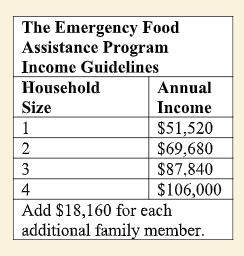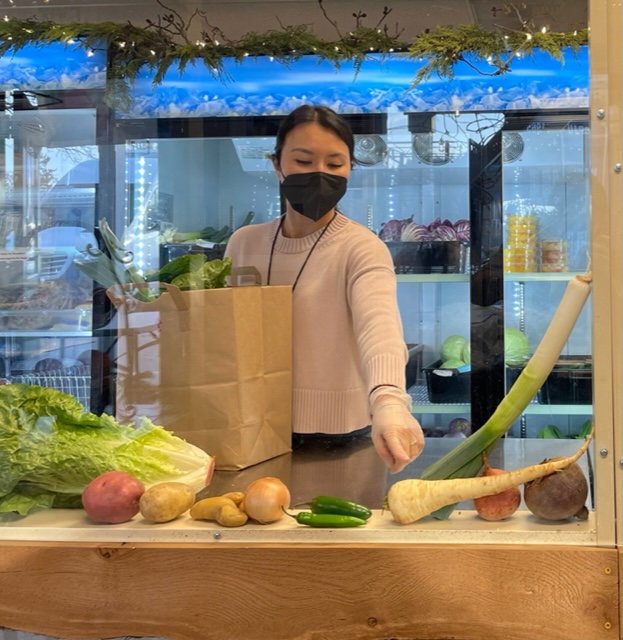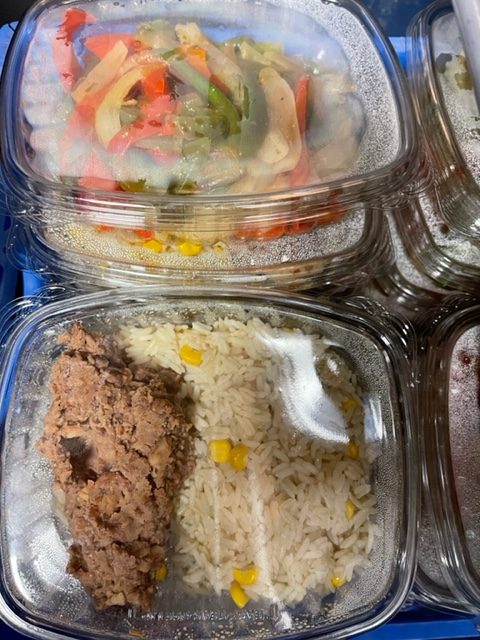||| FROM RICK RHOADS for ORCAS ISLAND FOOD BANK |||
Free food can change the lives of people struggling to keep up with the increased cost of food, housing, gas, medical care, and other necessities. For example, on a typical weekly visit to the Orcas Island Food Bank (OIFB), a family of two saves $106; a family of four saves $150. Yet here and throughout the United States, many people who qualify for nutritional assistance don’t seek it.
 In 2021, the Connecticut Foodshare’s Institute for Hunger Research and Solutions surveyed 1,000 people regarding their concerns about going to a food pantry. Respondents gave multiple reasons: 69% said they “want to support themselves,” 49% worried that they had too many assets to qualify, 48% didn’t know the food pantry’s hours, 48% were “too embarrassed” to use a food pantry, and 40% worried that “others would find out.”
In 2021, the Connecticut Foodshare’s Institute for Hunger Research and Solutions surveyed 1,000 people regarding their concerns about going to a food pantry. Respondents gave multiple reasons: 69% said they “want to support themselves,” 49% worried that they had too many assets to qualify, 48% didn’t know the food pantry’s hours, 48% were “too embarrassed” to use a food pantry, and 40% worried that “others would find out.”

In April 2022 an article in Food Bank News explored how food pantries help potential customers overcome these obstacles. Food Bank News is a national online publication dedicated to “Advancing Best Practices in Hunger Relief.” The article, by Ambreen Ali, described the work of two food pantries: Feeding Tampa Bay (Florida) and Orcas Island Food Bank.
A word on food-assistance terminology: A “food pantry” is an organization that directly serves customers. A “food bank” is a warehouse facility that collects large quantities of food from supermarkets, government agencies, and other sources and distributes it to entities such as food pantries, schools, senior centers, low-income housing agencies, and meals-on-wheels programs. To confuse the issue, many food pantries, including OIFB, call themselves “food banks.”
For OIFB, according to the article, making customers feel welcome starts with treating them with dignity and respect and “feeding people what they actually want to eat.” OIFB “has focused in recent years on providing more fresh food to the community and displaying it in an inviting way.” OIFB also “runs ads in the local paper that emphasize its doors are open for anyone and that no paperwork is required to receive food. The messaging is designed to reframe the concept of food assistance as an issue of food justice, rather than a handout.”
The article concluded with a quote from OIFB Executive Director Amanda Sparks, “Dignity is defined when all demographics in our community who need food can see themselves and their families represented on the shelves.” Toward that end, OIFB stocks protein for vegetarians, gluten-free products, and foods for those who are lactose intolerant. OIFB also has two Spanish-speaking staff members, stocks foods that our island’s Latinx/Hispanic residents are accustomed to eating, and recently added Hispanic prepared meals to go.

Another new program, meal kits, went live in May. OIFB partnered with a few other food pantries and the Washington State Department of Agriculture to create a three-month pilot program. Each month, 200 meal kits are assembled and distributed. A kit includes all the ingredients for a healthy meal. Six different kits help OIFB’s customers learn new ways
to enjoy food through culturally diverse recipes and cooking techniques.
- Orcas Island Food Bank
- www.orcasislandfoodbank.org • (360) 376-4445
- 116 Madrona Street (PO Box 424), Eastsound, WA 98245
- Hours of food distribution: Monday 3:00 to 6:30, Tuesday and Friday, noon to 6:30
- OIFB is an equal opportunity provider and employer.
**If you are reading theOrcasonian for free, thank your fellow islanders. If you would like to support theOrcasonian CLICK HERE to set your modestly-priced, voluntary subscription. Otherwise, no worries; we’re happy to share with you.**








